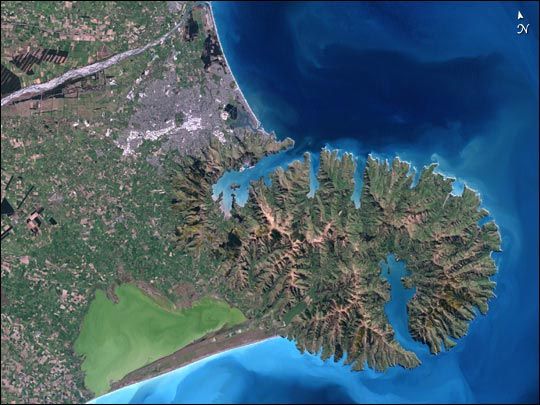Why Earthquakes in New Zealand Increased Birth Rates

A week after an earthquake killed at least 160 people in New Zealand, the country is experiencing a surge of new life. In Canterbury, the region affected by the quake, hospital maternity wards are filled to capacity, and they have even had to transfer some newborns to other hospitals.
The birth rate also rose immediately after a 7.0-magnitude quake shook the same New Zealand region last September.
"Earthquakes do tend to hurry things along for those intending to deliver," Canterbury district health director David Meates told the local media. Regional midwifery director Samantha Burke commented, "I think anecdotally people go into survival mode."
Studies have shown an uptick in stress during pregnancy can sometimes trigger a hormone surge that induces early labor.
Sex spike
Birth rates will spike not just immediately after natural disasters. They pick up around nine months afterward, too.
An 8.8-magnitude earthquake that struck central Chile Feb. 27, 2010, for example, was followed nine months later by a baby boom. "We have found a marked increase in obstetric consultations in the areas most damaged by the earthquake," Chilean Health Minister Jaime Mañalich said in November.
Sign up for the Live Science daily newsletter now
Get the world’s most fascinating discoveries delivered straight to your inbox.
The same thing happened nine months after Haiti's devastating quake of Jan. 12, 2010. According to a reproductive health survey launched in October by the United Nations Population Fund, the fertility rate has tripled in urban areas in the country since the disaster.
Population Fund representative Igor Bosc said a lack of infrastructure is responsible. "Most of the hospitals able to provide services were destroyed in the most densely populated parts of the country," Bosc told the local media in November. That meant that women did not have access to their preferred contraceptives.
As well as possessing fewer condoms, disaster survivors may have been engaging in more sex.
Sex is a way of coping with stress, explained one Haitian journalist. "In those fragile situations, people are slowly trying to rebuild their lives," Fredrick Jean Pierre said. "There are women who give themselves to a man to benefit from his protection inside the camp. Others sell themselves so they can get food and water. Sometimes it is their only means of access. This is happening quite often."
Nothing else to do
Stir-craziness may also contribute.
Nine months after New York City experienced a 10-hour blackout in November 1965, births seemed to surge. "The lights went out and people were left to interact with each other," Paul Siegel, a sociologist, told the New York Times in 1966. Some skeptics, however, dismissed the increase as a meaningless fluctuation.
The media has reported birth spikes all up and down the East Coast the past couple of autumns, attributed to the previous winters' "snowpocalypses."
This article was provided by Life's Little Mysteries, a sister site to LiveScience. Follow Natalie Wolchover on Twitter @nattyover
Natalie Wolchover was a staff writer for Live Science from 2010 to 2012 and is currently a senior physics writer and editor for Quanta Magazine. She holds a bachelor's degree in physics from Tufts University and has studied physics at the University of California, Berkeley. Along with the staff of Quanta, Wolchover won the 2022 Pulitzer Prize for explanatory writing for her work on the building of the James Webb Space Telescope. Her work has also appeared in the The Best American Science and Nature Writing and The Best Writing on Mathematics, Nature, The New Yorker and Popular Science. She was the 2016 winner of the Evert Clark/Seth Payne Award, an annual prize for young science journalists, as well as the winner of the 2017 Science Communication Award for the American Institute of Physics.












